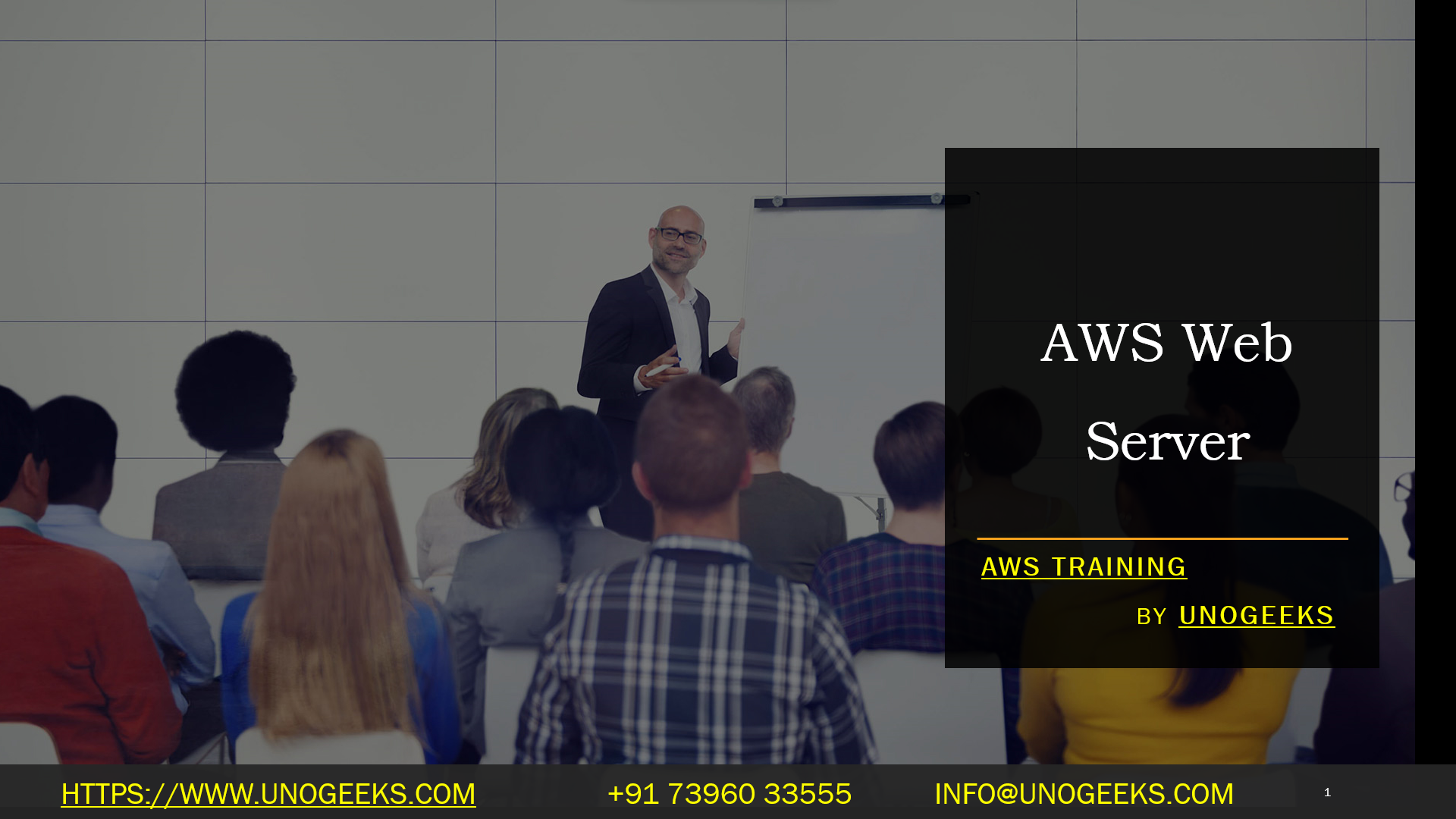AWS Web Server
Amazon Web Services (AWS) offers a variety of services and options for hosting web servers, making it a popular choice for businesses and developers looking to deploy web applications and websites. Here’s an overview of how you can set up a web server on AWS:
- Amazon EC2 (Elastic Compute Cloud): Amazon EC2 is a core AWS service that provides scalable virtual machines (instances) that you can use to host your web server. Here are the steps to set up a web server using EC2:
a. Launch an EC2 Instance:
- Choose an Amazon Machine Image (AMI) that suits your web server needs. Common choices include Amazon Linux, Ubuntu, and Windows Server.
- Select an instance type based on your resource requirements.
- Configure security groups to allow incoming traffic on HTTP (port 80) and HTTPS (port 443), if needed.
b. Connect to Your Instance:
- Use SSH (for Linux) or Remote Desktop (for Windows) to connect to your EC2 instance.
- Install and configure the web server software of your choice, such as Apache, Nginx, or Microsoft IIS.
c. Upload Your Website Files:
- Transfer your website files to the EC2 instance using SCP, SFTP, or other methods.
- Configure your web server to serve these files.
d. Domain Configuration:
- Register a domain name or use an existing one.
- Configure DNS records to point to your EC2 instance’s public IP address or use AWS Route 53 for domain management.
e. Secure Your Website:
- Enable HTTPS by obtaining and configuring SSL/TLS certificates (e.g., Let’s Encrypt or AWS Certificate Manager).
- AWS Elastic Beanstalk: AWS Elastic Beanstalk is a Platform-as-a-Service (PaaS) offering that simplifies web application deployment. You can deploy web applications built with various programming languages and frameworks. Elastic Beanstalk handles infrastructure provisioning, scaling, and application deployment, allowing you to focus on your code.
- Amazon Lightsail: Amazon Lightsail is a simplified compute platform designed for easy web server hosting. It offers pre-configured instances with a user-friendly interface, making it an excellent choice for beginners or small projects. Lightsail instances come with built-in options for popular web server software.
- AWS Lambda and API Gateway: For serverless web applications, you can use AWS Lambda for executing code in response to HTTP requests. AWS API Gateway can be used to create APIs that trigger Lambda functions, allowing you to build web applications without traditional web servers.
- Container Services: AWS provides container orchestration services like Amazon ECS (Elastic Container Service) and Amazon EKS (Elastic Kubernetes Service) for deploying web applications in containers, which offers scalability and flexibility.
- Content Delivery: To optimize web server performance and reduce latency, consider using AWS services like Amazon CloudFront (a Content Delivery Network or CDN) to cache and distribute content globally.
Demo Day 1 Video:
Conclusion:
Unogeeks is the No.1 IT Training Institute for Amazon Web Services (AWS) Training. Anyone Disagree? Please drop in a comment
You can check out our other latest blogs on Amazon Web Services (AWS) Training here – AWS Blogs
You can check out our Best In Class Amazon Web Services (AWS) Training Details here – AWS Training

———————————-
For Training inquiries:
Call/Whatsapp: +91 73960 33555
Mail us at: info@unogeeks.com
Our Website ➜ https://unogeeks.com
Follow us:
Instagram: https://www.instagram.com/unogeeks
Facebook: https://www.facebook.com/UnogeeksSoftwareTrainingInstitute
Twitter: https://twitter.com/unogeeks
